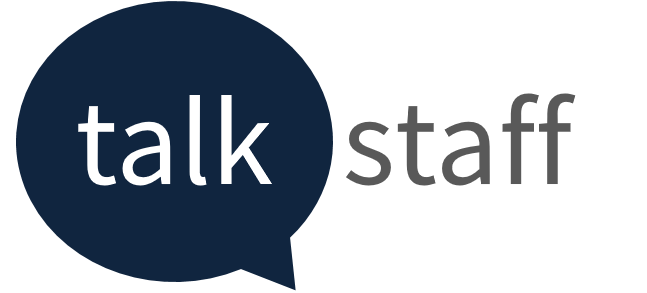Exploring the Connection Between Diversity, Equality and Inclusion in Employer Branding
- August 14, 2024
- Posted by: Hannah Ingram
- Categories: Employee Engagement, Organisational Culture

Effective employer branding improves employee retention and engagement. It also helps align recruitment efforts with your company’s mission and values. Moreover, when you prioritise Diversity, Equality and Inclusion (DE&I) in the workplace, you build an environment where diverse individuals are respected, valued, and integrated into the organisational culture.
In this article, we will discuss how DE&I shapes a strong employer brand. We will also share how to integrate DE&I into your employee value proposition (EVP) to enhance an organisation’s ability to attract and retain a diverse workforce for innovation and business success.
Free Diversity Equality and Inclusion Session – Authentic Inclusion through Intersectionality
How does DE&I enhance employer branding?
DE&I helps organisations become culture magnets that attract top talent. Companies that prioritise DE&I create a more equitable workplace and enhance their employer brand so they are more appealing to potential candidates. Doing so helps companies achieve the following:
It Creates a Positive Company Reputation. A strong reputation built on DE&I can enhance trust and credibility, enabling a company to become a leader in Corporate Social Responsibility. In turn, this encourages existing employees to take pride in their workplace and amplify the company’s positive image.
It Draws in Diverse Job Candidates. A focus on DE&I attracts everyone from top level degree holders to individuals from other educational backgrounds. Moreover, it draws candidates from various ethnic and social backgrounds, opening doors to a wider range of top-tier talent.
It Boosts the Company’s Image and Competitiveness. A strong DE&I strategy enhances brand loyalty among customers who appreciate and support inclusive practices. Furthermore, companies that foster a diverse workforce tend to be more adaptable and resilient to market changes.
It Boosts Employee Engagement and Retention. When employees see that their organisation actively champions diversity and inclusion, they feel a sense of belonging and loyalty. A solid employer brand that prioritises DE&I helps create an engaged workforce where employees are motivated to stay and contribute to the company’s success. As engagement levels rise, organisations experience lower turnover rates and a more dedicated workforce.


What are the key elements of DE&I in employer branding?
Prioritising DE&I allows companies to enhance their chances of finding the ideal talent for their roles. With diverse perspectives, this encourages innovation, improved decision-making, and a boost in financial performance. By grasping these key elements, companies can cultivate an inclusive environment and strengthen their standing as desirable employers.
Inclusive Recruitment Practices
Inclusive recruitment is the process of attracting candidates from diverse ethnicities and social backgrounds. However, it requires organisations to incorporate measures that proactively minimise biases that may affect hiring processes. By embracing inclusive recruitment, organisations enhance their reputation and increase their ability to attract diverse talent with equal opportunities for all candidates.
Ensure Diversity in Candidate Pools
Attracting diverse candidates demands deliberate strategies that expand the talent pool and reflect the organisation’s commitment to inclusion. Statista shares that 66% of global full-time employees believe that fostering inclusion and a sense of belonging is the most valued outcome of DE&I programs at their workplace. Here are initiatives that you can employ to create a more inclusive hiring process:
- Set Clear Diversity Goals – Establish measurable diversity objectives for recruitment teams to track progress and hold them accountable.
- Partner with Diversity-Focused Job Boards – Collaborate with organisations and job boards that specialise in promoting diverse talent.
- Craft Inclusive Job Descriptions – Use gender-neutral language and emphasise the organisation’s dedication to diversity and inclusion in job postings.
Address Bias in the Recruitment Process
Unconscious bias can hinder organisations from assessing candidates based solely on their qualifications. To mitigate it, here are some strategies that you should consider:
- Provide Unconscious Bias Training – Equip hiring teams with training to help them recognise and counteract their biases throughout the recruitment process.
- Implement Blind Hiring Techniques – Remove identifying information from CVs during initial screenings to reduce potential biases.
- Use Structured Interviews – Standardise interview questions and evaluation criteria to ensure all candidates are assessed equally.
- Regularly Evaluate Recruitment Practices – Continuously assess and refine recruitment processes by gathering feedback from candidates and employees to identify areas for improvement.
Showcase DE&I Initiatives
When companies highlight their commitment to DE&I, they can attract candidates from various backgrounds and reinforce their commitment to inclusivity and corporate social responsibility. This way, they demonstrate their values and create an inviting environment for diverse talent.
For starters, you can promote your DE&I programs and achievements by proactively sharing your progress toward diversity goals. You can do this by utilising your website or social media platforms to share community outreach efforts and internal initiatives.
Alternatively, you can highlight the unique contributions of your employees on your platforms. You can implement this by establishing a dedicated space on your company website where employees can share their experiences within the organisation.


Incorporate DE&I into Your Employee Value Proposition (EVP)
Align DE&I into EVP to showcase how diversity enriches the workplace, drives innovation, and enhances employee satisfaction. These are some of the methods companies can use to attract top talent from various backgrounds and foster a sense of belonging among their workforce:
- Ensure that the organisation’s core values reflect diversity and inclusion.
- Showcase specific programs that promote inclusivity, such as mentorship opportunities and employee resource groups.
- Design benefits packages that meet employees’ diverse needs. This can include gender-neutral parental leave and accommodations for disabilities.
- Ensure that all EVP materials utilise language that resonates with a broad audience. Avoid jargon and gendered terms as much as possible.
- Regularly report on the organisation’s DE&I initiatives. You can also share data on representation and engagement to highlight ongoing commitment.
Leadership Commitment and Accountability
Leaders set the tone for the organisation, and their dedication to DE&I influences the entire company culture. When they actively promote and support DE&I efforts, leaders can create an environment where inclusivity is embedded in every aspect of the business.
Set Clear DE&I Goals and Metrics
DE&I objectives should be specific, measurable, and aligned with the organisation’s overall strategic goals. Regularly tracking and reporting these metrics ensures the company stays accountable and committed to its DE&I efforts.
Here’s how you can set clear DE&I goals and metrics:
- Define Specific Objectives – Set clear and achievable DE&I goals that align with the organisation’s broader strategy.
- Measure Progress – Implement robust tracking mechanisms to monitor progress against these goals.
- Report Regularly – Provide regular updates on DE&I metrics to maintain transparency and accountability.
- Adjust Strategies – Use data insights to refine and improve DE&I strategies continually.
Foster Inclusive Leadership
Inclusive leaders create an environment that encourages diverse perspectives. They should also model inclusive behaviours to build trust and collaboration among team members. Here are the ways to promote inclusive leadership:
- Offer comprehensive training programs for leaders to increase their awareness and understanding of DE&I issues.
- Encourage leaders to demonstrate inclusive behaviours in their daily interactions.
- Establish mechanisms to evaluate and hold leaders accountable for their contributions to fostering an inclusive culture.


Continuous Learning and Development
Continuous learning and development ensure employees have the knowledge and skills to engage effectively in DE&I initiatives. This commitment to learning improves individual growth and strengthens the overall organisational culture.
Espresso Sessions – Free Learning and Development Sessions
Provide Ongoing DE&I Training
Offering ongoing DE&I training helps educate employees about important topics related to diversity, equity, and inclusion. Regular training sessions help reinforce the organisation’s commitment to DE&I and promote a culture of continuous learning among staff.
Here’s how to do it:
- Organise frequent workshops and seminars that focus on various DE&I topics.
- Offer access to online courses and resources that employees can use at their own pace.
- Bring in experts to share insights and experiences related to DE&I.
- Customise training sessions to address specific needs and challenges within the organisation.
Make Learning at Work Week Sessions and all year event
Encourage Employee Engagement
Encouraging employee engagement allows open dialogue and provides avenues for feedback. Organisations can then empower employees to participate in DE&I initiatives and contribute their unique perspectives.
Below are some of the strategies to encourage employee engagement:
- Implement Feedback Mechanisms – Create channels for employees to share their thoughts and feedback on DE&I efforts.
- Organise Inclusive Events – Host events that celebrate diversity and encourage participation from all employees.
- Involve Employees in Decision-Making. To promote a sense of ownership and commitment, include employees in discussions and decisions related to DE&I initiatives.
Explore the power of effective decision making
Building Trust and Loyalty: The Impact of DE&I on Employee Engagement
Integrating DE&I into employer branding builds trust and loyalty among employees. This practice creates a supportive environment where everyone feels valued. This commitment also enhances job satisfaction and productivity while attracting top talent.
A strong employer brand rooted in DE&I improves an organisation’s reputation. It makes it more appealing to job seekers and fosters a positive workplace culture. Be sure to follow the DE&I tips in this article and embed them throughout your organisation, from recruitment to daily operations. When you prioritise DE&I in branding strategies, you create an engaging workplace, drive business success, and keep companies competitive in the talent market.
This article was taken using external knowledge from SAAS experts as well as input from our own HR and L&D teams.
💙 Build a Work Culture of Belonging, Inclusivity and Learning 💙
At Talk Staff we’re a people consultancy who understand the deep impacts of belonging in businesses. Our organisational development team at Designed4Success specialise in culture change, DE&I and wellbeing
Want to explore more to develop your teams and leaders





